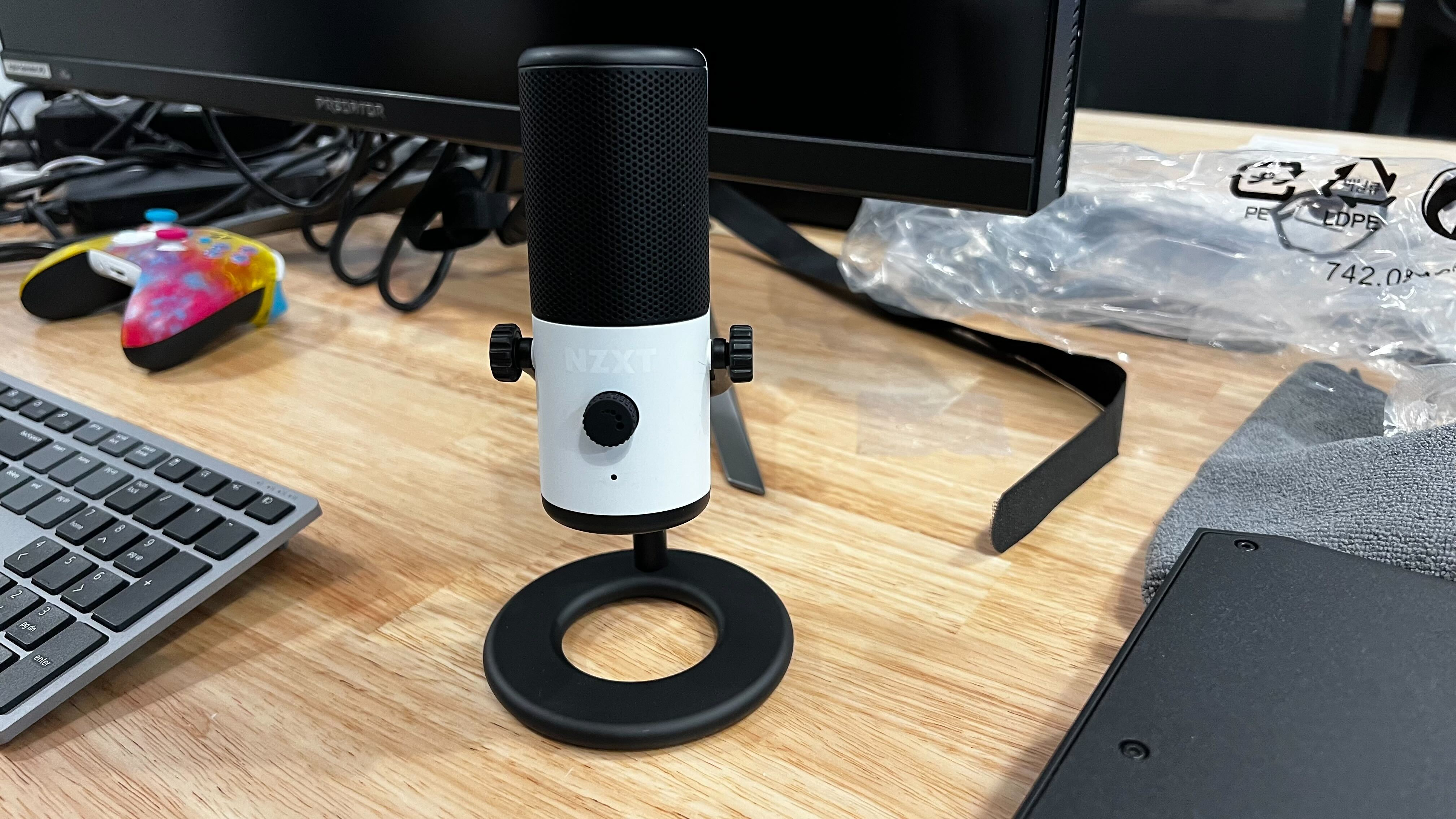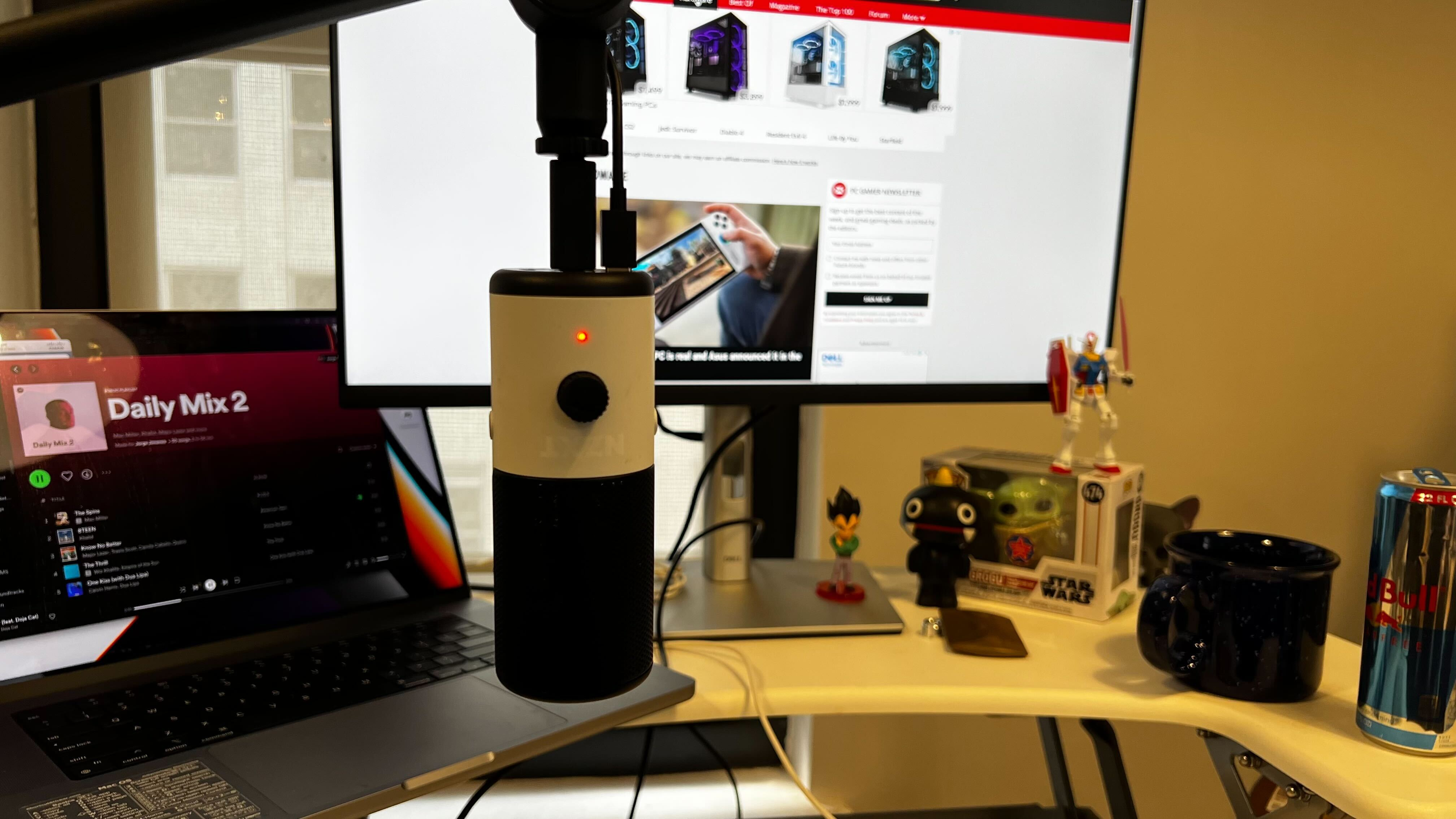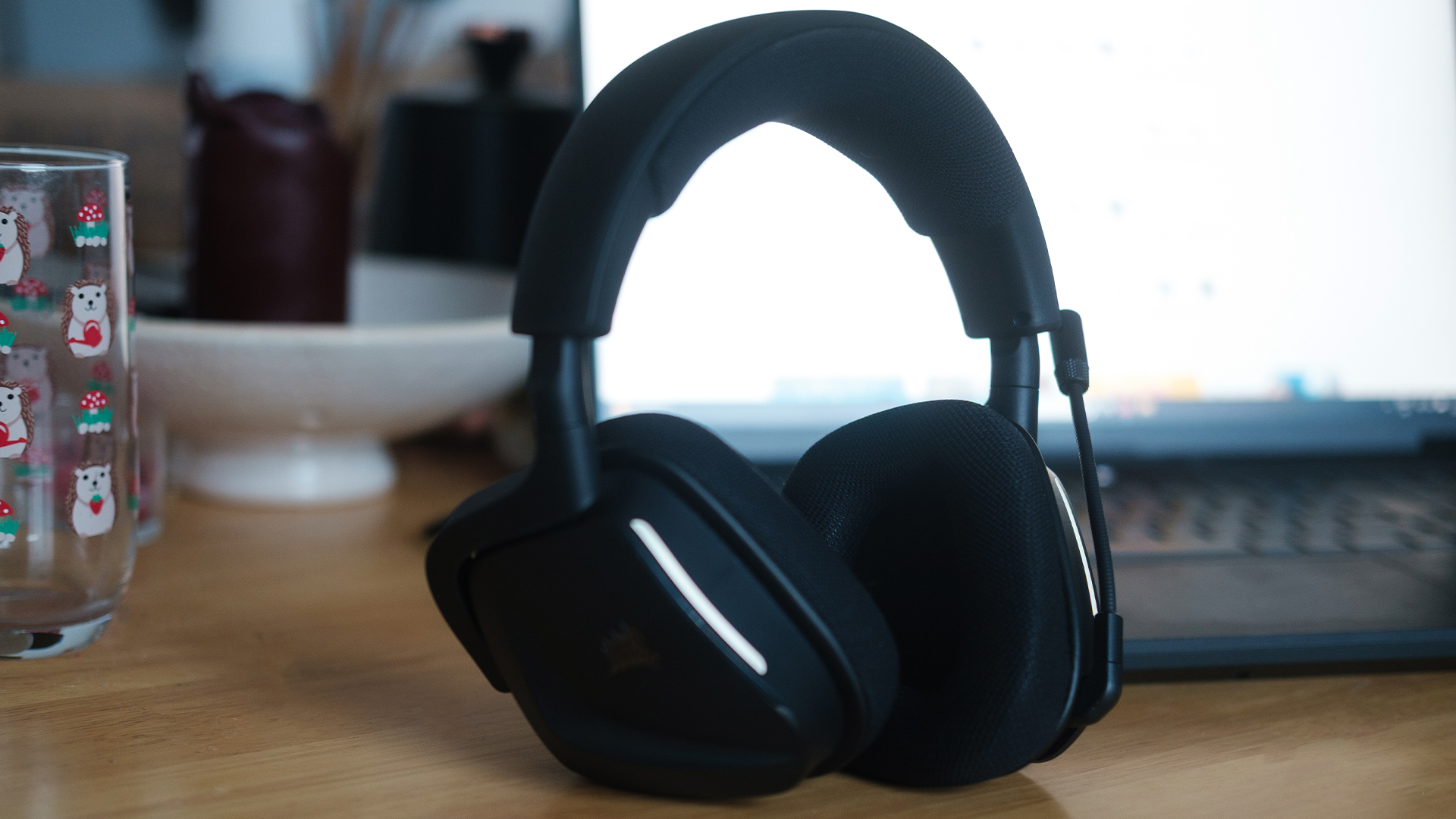Our Verdict
The NZXT Capsule Mini is an attractive, good-sounding microphone that feels a little too expensive compared to other budget microphones. Especially when the build quality leaves much to be desired.
For
- Crisp mid-range vocals
- Weighted desk stand
Against
- Plastic chassis
- A lot pricier than the competition
PC Gamer's got your back
As budget microphones go, I think it's safe to say that we've pretty much been spoiled with the number of quality mics for less than $100 over the last couple of years. Seemingly every major microphone maker has been trying their hand at creating a budget offering. And now NZXT has taken its flagship Capsule mic and shrunk it down to a nice-looking mini-microphone hoping to join in on the fun.
The Capsule Mini is a small-form-factor USB mic that gives your voice a nice, crisp quality while only costing you $70. The good thing about the Capsule Mini is that it sounds just as good as more pricey mics, but at a fraction of the cost.
Considering it's aimed toward budget users, it's no surprise some features have been stripped to keep costs low. Thankfully, the one thing it's not lacking is solid recording quality. The NZXT continues my recent streak with great-sounding budget microphones.
I really like that the black-and-white color scheme of the NZXT Capsule made its way to the Capsule Mini; since it has no RGB, it's a nice way to give it personality, and it looks really cool on camera. Though if you want to keep things professional, there is a version of the Mini that's in all black; honestly, I am pretty over all-black PC accessories, aren't you?
The Mini keeps things simple, with just a single volume knob (that acts as a mute when you press it) in the front and a 3.5mm jack on the bottom, and a USB-Type C port. It's mostly a plug-and-play solution, so if you want to mess with mic settings like gain or mix, you're regulated to third-party or its own NZXT Cam software. The Cam software is pretty barebones, and you're better off using something like OBS and XSplit if you really want more in-depth customization for your sound profile.
Below, you can hear how the Capsule Mini sounds against a trio of my favorite sub-$70 microphones; the HyperX Solocast, Razer Seiren Mini, and the Audio Technica AT2020+. The sound is clear and crisp, providing some solid mid-range vocals perfect for podcasting or using as a microphone for video calls.
Interestingly enough, the Capsule Mini pretty much sounds just as good as the Solocast and Seiren Mini, which makes sense since all three are pretty similar spec(c)ed(?), with the Capsule Mini having a slightly wider frequency range.
You'll hear some pretty noticeable plosives during the test audio, so investing in a pop filter or windscreen would be a really good idea to avoid that issue. When I test mics, I'm usually speaking into them from six inches away, so if you set yours a little further out, you may be able to get away with not needing one.
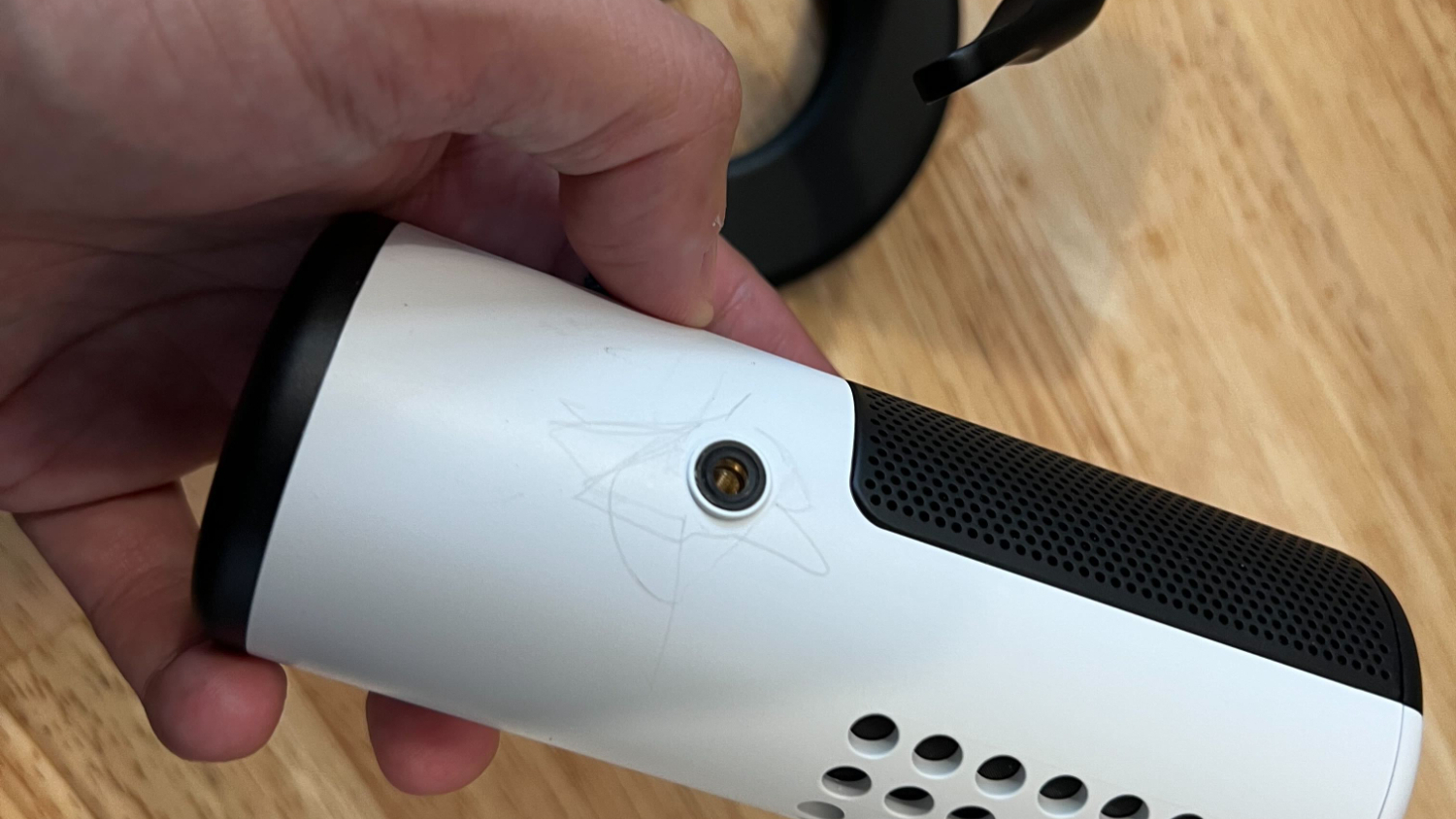
My biggest gripe with the Capsule is its all-plastic body doesn't seem built to last, which is a shame because I really dig the overall look of the microphone. At times, it feels flimsy, and I feel it wouldn't survive a trip in my backpack unscathed. And quite frankly, it's surprising considering how sturdy the metal desk stand it comes with is. Usually, it's been the other way around, with bomb-proof microphones coming with these comically meek, wobbly stands.
When removing it from the desk stand to mount on the boom arm, I also noticed that the desk stand scuffed up the sides of the microphone, leaving ugly black blemishes on the sides of the Capsule Mini. There's no worse feeling in the world that scratching a new piece of gear within the first hour of you using it </3
For $70, I expected something more durable, like the Audio Technica At2020+, which you can find on sale for less than $60 most days. And that has a nice solid chassis with a metal grille that takes a beating and comes with a nice little travel bag. The Solocast, our favorite budget mic, which has occasionally popped up on sale for as little as $35, has a more sturdy frame for travel. All of which sound roughly the same, if not better.
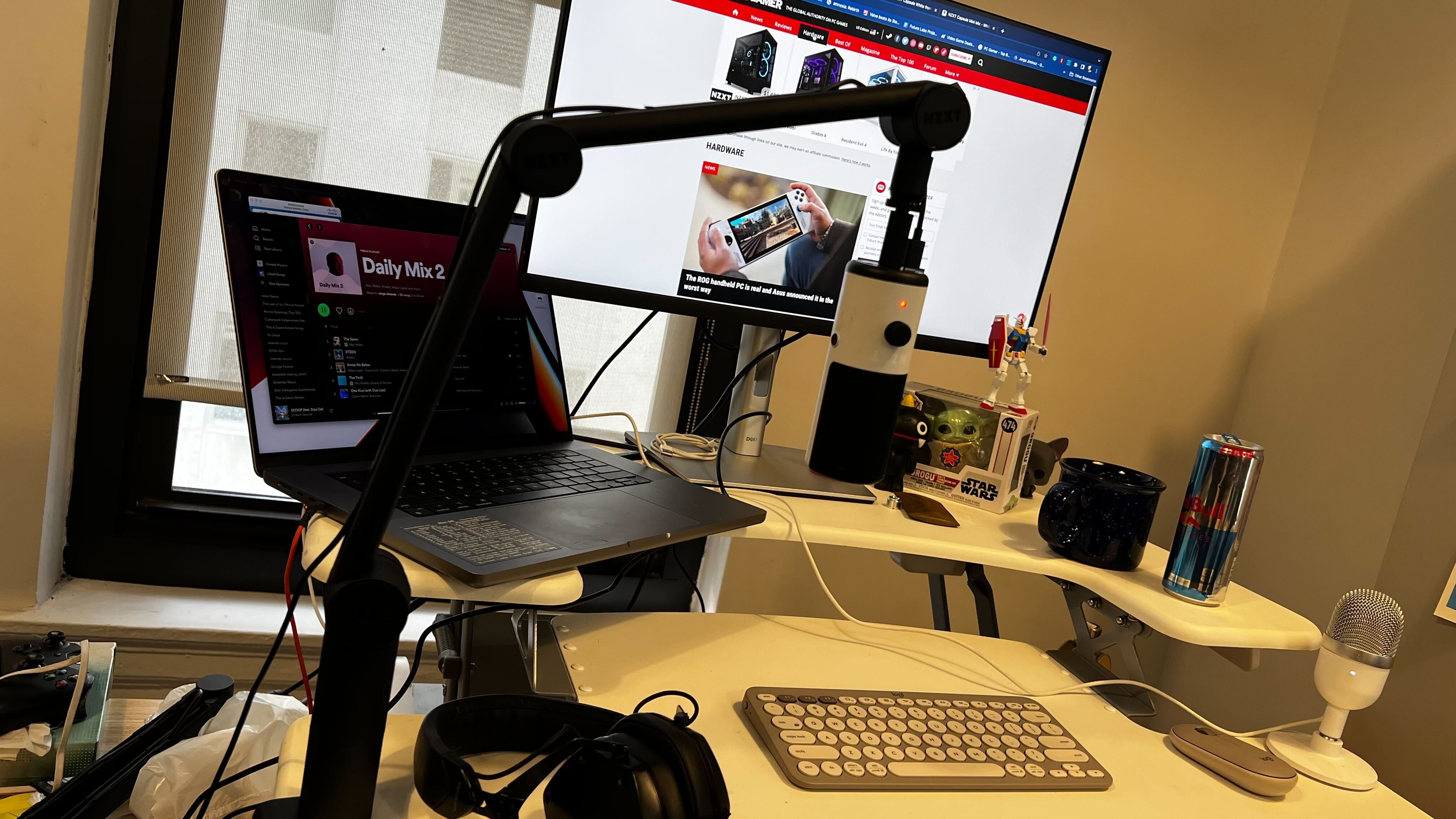
NZXT also sent over its Boom Arm Mini, which sells for $70 as well. Installation was easy, and the arm is well constructed. I am a sucker for a boom arm that neatly holds your cables in place and doesn't look like pieces of crooked metal slapped together with a mic at the end. And if you're the type that likes to move around their mic as they speak, it'll play nice with your chaotic movements. More importantly, it's on the smaller side, so it doesn't take up too much space on your desk.
The NZXT Capsule Mini is a good little mic that takes everything I like about the Capsule microphone and hits it with a shrink ray. However, even as a budget mic, it still feels overpriced at $70, and its less-than-stellar build quality doesn't help its case.
The NZXT Capsule Mini is an attractive, good-sounding microphone that feels a little too expensive compared to other budget microphones. Especially when the build quality leaves much to be desired.

Jorge is a hardware writer from the enchanted lands of New Jersey. When he's not filling the office with the smell of Pop-Tarts, he's reviewing all sorts of gaming hardware, from laptops with the latest mobile GPUs to gaming chairs with built-in back massagers. He's been covering games and tech for over ten years and has written for Dualshockers, WCCFtech, Tom's Guide, and a bunch of other places on the world wide web.
